
What's Your Container?
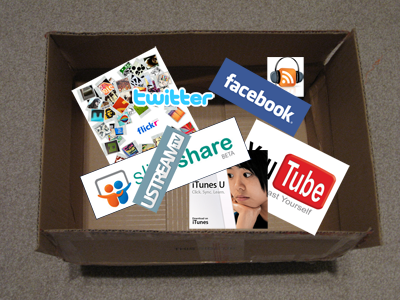 What I love about presenting is how themes emerge within my presentations that I was never thinking about before the conference begins. But somewhere in the process of doing 6 presentations at the EARCOS Teacher’s Conference a theme in my sessions emerged.
What I love about presenting is how themes emerge within my presentations that I was never thinking about before the conference begins. But somewhere in the process of doing 6 presentations at the EARCOS Teacher’s Conference a theme in my sessions emerged.
We talked in many of my sessions about having a container to house all of your web “stuff”. What that contain looks like really doesn’t matter as long as:
A. It works for you
B. It allows EVERYTHING to be embeded
When you create a “class container” think of it as not just a place to actually put stuff, but a place that allows you to pull in information from other parts of the web. It should allows you to the following:
1. Embed YouTube Videos
2. Embed RSS Feeds
3. Embed Slideshare Slides
4. Anything else that has a standard embed code.
Using the above criteria your container could be:
1. A Blog
2. A Wiki
3. A Ning
4. A Moodle Course
5. Netvibes.com
6. Pageflakes.com
7. Share your container in the comments
All of these above containers work. Find the one that fits your needs and either is unblocked at your school or your school has adopted system wide and start creating your online classroom.
At our school we’ve adopted two formats school wide. Our Elementary Teachers are using blogs and when you view them as a container you can see what I’m talking about. Here are a couple of good examples:
- Chrissy Hellyer’s 5th Grade Blog
- Robin Bulsza’s 5th Grade Blog
- Cheryl Terry’s 4th Grade Blog
- Mary Bellone’s 4th Grade Blog
There are others, but I think these four when viewed as “Blogs as Containers” make the point clear.
In our Middle School and High School we’re using Moodle. I can’t show you any examples as our Moodle Courses are password protected but within Moodle you can embed all of the above and put RSS feeds in the sidebars. A Moodle course can easily become your container.
Once you view your class website as a container it allows you to think outside the walls of that container and ask yourself:
What can I pull into my space to enhance the online learning landscape for my students?
You don’t have to create it all….you just have to know/understand that you can pull things into your space to create a rich learning environment.
The Netvibes page we are using with all 5th graders is starting to become a grade level container. You can see how we’ve pulled in a couple of things, we can do more with it, and next year I think as this idea sinks in, teachers will want to use it more as a container than just an RSS Feed reader.
Then there’s the Ning that Alan November set up in about 5 minutes in a presentation at the EARCOS conference. As he was talking to the audience I created the site in literally 5 minutes, added a video, embedded the Twitter feed for the conference, embedded a custom search engine, and created a link to notes from another session. We didn’t even use any of the built in features to get started. Instead we were able to instantly create a container for the conference and pull all of the information on the web into that one spot. A one-stop shop for everyone online about this conference and for the educators of EARCOS. If you are an EARCOS teacher or you are looking to connect with teachers in the Asia region to do a project EARCOS-Ed is the place to make those connections happen.
Take a look at your classroom site…..is it a container? Does it allow you to pull in information from around the web. Can you create a container of learning?
Feel free to show us your example of a classroom container in the comments!

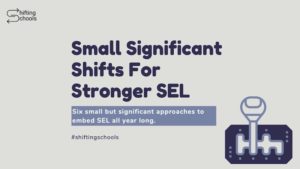
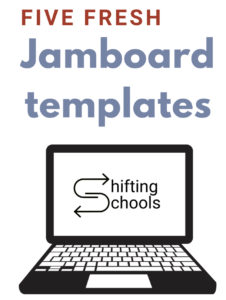
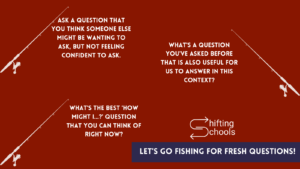
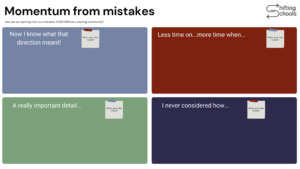



Wow. Pulling it all together for us. Is it possible to have one ning that pulls together all the resources from multiple conferences? I’m not attending #nesa2010 but it’s great reading people’s twitters and blogs. Talk about connecting teachers.
Since EARCOS ended (yesterday), I’ve only left my computer to sleep (and ended up dreaming about Twitter) and to cook (even then I keep running from the stove to the computer to see what’s new).
My personal container is Netvibes (although I started exploring Google Reader since I have a google account). My students and I use the school’s blogsite. Instead of having the students commenting to my blogs and getting mixed up, the IT manager helped to set up linked blogsites for the subject areas. Now, I’ve learnt about Ning and plan to teach myself more about it and get going with it with the grade 8 subject teachers with whom I’ll team teach in Science, Social Studies and English next academic year.
This is an interesting post, and it should make us think about what we are doing and how and why. I’m not sure the word “container” works for me, but I get your point. I need to re-evaluate my class blog site, too, and it was helpful to jump around the examples that you shared in your post.
Kevin Hodgson
Sixth grade teacher
Massachusetts
http://epencil.edublogs.org/
Probably my single biggest container is my collection of OneNote notebooks. I also have lots of stuff on wikis, saved on my RSS and delicious accounts, and flagged in my Twitter PLN, but OneNote is where I get to organize everything (and link to it). I finally got the chance to move to a mac this year after years of wanting to but being unable to, and I absolutely had to have parallels installed so I could continue to run OneNote.
WOW. This post has really opened my eyes as a future educator! I attend the University of South Alabama and am a student of Dr.Strange’s EMD310 class. We have been learning how to use delious and twitter among many other websites as well in order to stay in touch and organized in the field of teaching. I understood for the most part was i was doing but you seemed to really break down the idea of exactly how to utilize these tools. Up until now I only thought I understood. When I first heard the letters PLN i got scared and have still been trying to figure just exactly what I am suppose to be doing for it. I can’t thank you enough for writing this post.
Thanks for the wonderful post. I am trying to start up a blog or wiki for my parents and students. After looking at your examples, I have a better idea of some of the things I could include. However, I teach reading to multiple grades(K-8). Do you have any examples of blogs or wikis that work with younger students? Have you run across any that focus on reading or literacy? I would appreciate seeing some examples to give me some direction.
You can make your wiki or blog any focus that you want. We have students at our school who write book reviews as blog posts for other students, They do podcasts that share reading strategies with other students…and writing…..just check out some of their blogs….they’re writing all the time. You just have to have the imagination to allow them to create amazing works…and they’ll do it. 🙂
Thank you for the organizational tips! Teachers have so many resources. Sometimes our biggest challenge is “where did I put that…?”. Your organization “container” is a great idea.
[…] this will be a place for reflection and growth as I collect ideas and thoughts into my “container“. blog comments powered by Disqus var disqus_url = […]
[…] this will be a place for reflection and growth as I collect ideas and thoughts into my “container“. blog comments powered by Disqus var disqus_url = […]
[…] are many tools that could be used for this type of system such as Blogs, Wikis, Nings etc (see Jeff Utecht’s recent post about selecting the best tool for the job or Kim Cofino’s post on the same […]
[…] Share this on del.icio.us […]
The said information here best describes the storage of docs and videos. I have understand and met an agreement that I would try this one. It really is helpful to know I can store my items on an online storage system. I am grateful for this.
Thanks for this wonderful post. I am trying to start up a few blogs or wiki for my kids and students. After looking at your examples, I have a better idea of some of the things I should include. Now off to work on them.
This really got me thinking about planning ahead for “containment”. At Bredin Youth Connections we have been experimenting with different ways to converge our many social media strategies. We provide career and employment services to youth and have extended our resources through facebook, twitter, youtube, wordpress, and google calendar. Ultimately we opted for a Facebook Page as the cornerstone of our services based on feedback from clients. I responded to your article with a post of my own here:
http://textbookslayer.tumblr.com/post/3693098130
Thanks for the post. My favourite container is Evernote which allows me to collate all my ideas in one place and to have access to it wherever I go.
WOW. This post has really opened my eyes as a future educator! I attend the University of South Alabama and am a student of Dr.Strange’s EMD310 class. We have been learning how to use delious and twitter among many other websites as well in order to stay in touch and organized in the field of teaching. I understood for the most part was i was doing but you seemed to really break down the idea of exactly how to utilize these tools. Up until now I only thought I understood. When I first heard the letters PLN i got scared and have still been trying to figure just exactly what I am suppose to be doing for it. I can’t thank you enough for writing this post.
I would say my container is a blog – WordPress.com.
I am very impressed by the blog of “A teenage enthusiast”. This young man wrote a page of “rules for blogging” that show quite a bit of maturity and deep thought. I am not really familiar with blogs so I need to figure out how they work and whether this would be a useful tool for our class. I read the above blog because I saw that he had put so much effort into the process of blogging in order to obviate issues with content relevance.
I guess my biggest problem with adding a lot of technology to my courses is to figure out exactly how to structure the technology in a way that it will be pertinent to our work -in a way that it would add value. On the other hand I don’t want to find that I have an overwhelming amount of work that I have to monitor on a daily basis (in addition to the regular class/homework that I have to process). There is so much out there that making decisions about what to undertake and what to leave out is now my biggest problem.
Joanne
Hi Joanne,
Thanks for your comment. You might be interested in this free PDF that I wrote a while back on how to use blogs as web-based portfolios with students. It might give you more information and a better understanding of how to use blogs in your classroom. I believe they are a very powerful learning platform.
verry nice idea… blog is my container